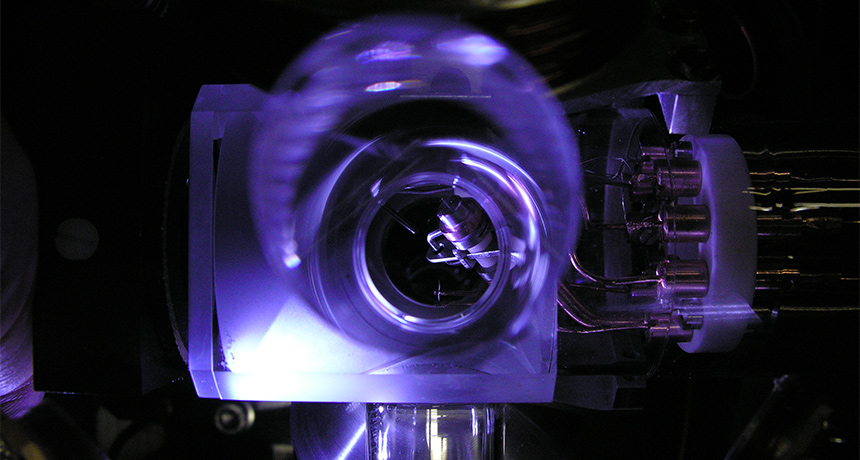Ultraprecise atomic clocks put Einstein’s special relativity to the test
An experiment tested a foundational principle of physics known as Lorentz symmetry

WATCHING THE CLOCK Scientists monitored two atomic clocks for six months in order to test a tenet of Einstein’s special theory of relativity. Each clock, like the one shown, contained a single ion of ytterbium.
PTB